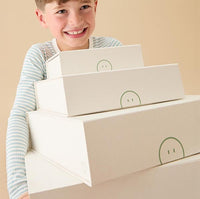How to learn first aid at home
How to learn first aid at home
|
Accidents happen all the time, especially when you have young children. Little ones are very good at getting themselves into situations where injuries occur, from scraped knees to broken bones or worse. When you see your little one hurt, it can be difficult to think clearly, but having expert knowledge on first aid can help you (& them) to remain calm and deal with the situation safely. In this uncertain time, we are spending a lot more time at home as a family. Whilst this most likely means you cannot go in-person to a first aid course, there are plenty of resources online to teach you the necessary skills. The British Red Cross website & their free app have simple tips, animations & videos to help you learn first aid for babies & children and coach you through an emergency. There are also plenty of online first aid courses available that you can do whilst you stay at home, to help take a little anxiety out of this challenging time. |
 |
Below are the expert tips on how to deal with the most common accidents involving children.
Be preparedEnsure you have the foundations of a first aid kit. You can buy full kits from most pharmacies or online that include plasters, antiseptic, gloves etc. Having this in your house will make performing first aid much simpler. |
 |
A bump on the headBeing very new to walking or an overexcited toddler unsteady on their feet can lead to your little one falling over. Apply something cold such as frozen peas wrapped in a towel to the bump. However, if your little one becomes sick or drowsy, this could be a sign of something more serious & you should call the emergency services. |

|
A nosebleedPlenty of things can cause a nosebleed from a fall to dry weather and remember, they often look worse than they are. Pinch the soft part of your little one’s nose & lean them forward. Ask them to breathe calmly through their mouth and spit out any blood. Continue to do this for 10 minutes. Please seek medical advice if the bleeding continues for more than half an hour. |
A burnAs cautious as we all are, it’s impossible to watch our little ones 100% of the time & sometimes they find themselves near something hot. If your child has a minor burn where the skin is still intact, run it under cold water for at least 10 minutes to reduce pain & swelling. Then cover the burn in cling film or clean plastic bag to reduce pain by keeping the air away. |
 |
ChokingLittle ones are notorious for putting anything & everything in their mouths, or just not chewing their food properly. As hard as it may sound, if your child is choking try & stay calm, call the emergency services and then follow these steps: If your little one is under 1, place them face-down on your forearm supported by your thigh. Give up to five firm blows on the back between the shoulder blades. If the object is still lodged, turn them over & place two fingers in the middle of their chest below the nipples and push sharply downwards up to five times. Repeat these two moves until the emergency services arrive. If your child is over 1, bend them forward with one of your hands supporting their front. Hit them firmly between the shoulder blades up to 5 times. If the item is still lodged, place one hand around the waist just above the belly button and pull inwards. If the blockage remains, continue these two moves until the emergency services arrive.
|
|
 |




